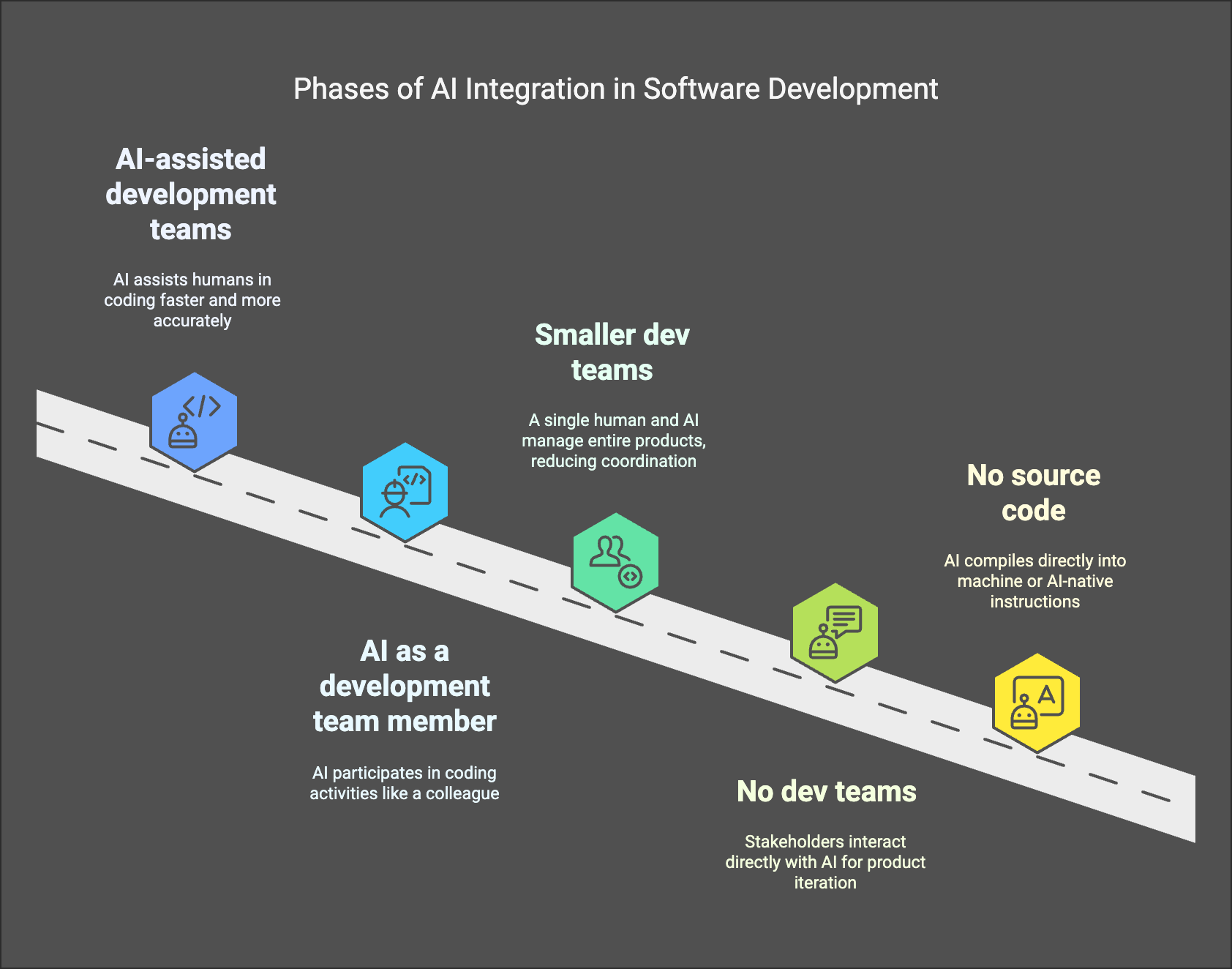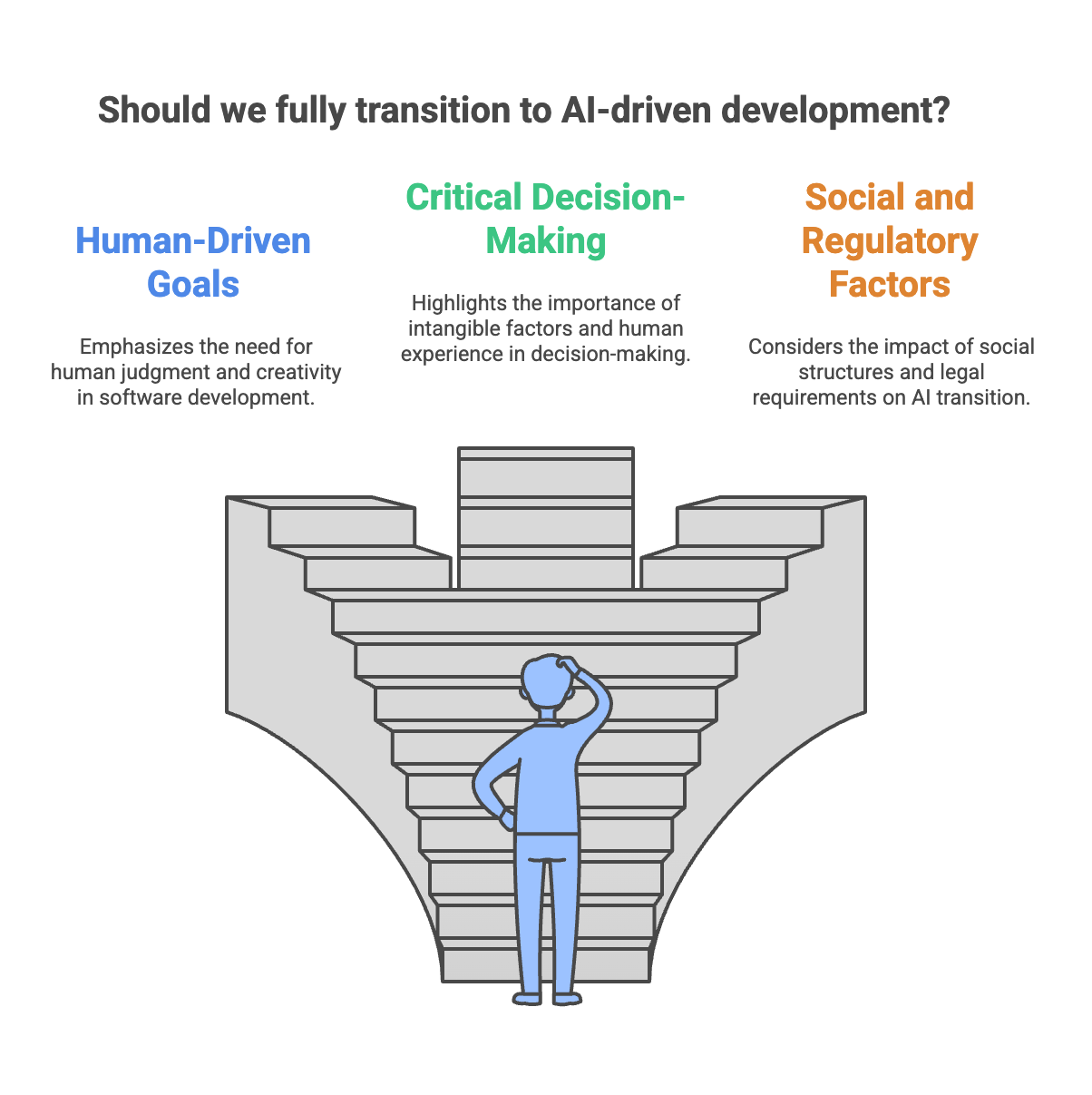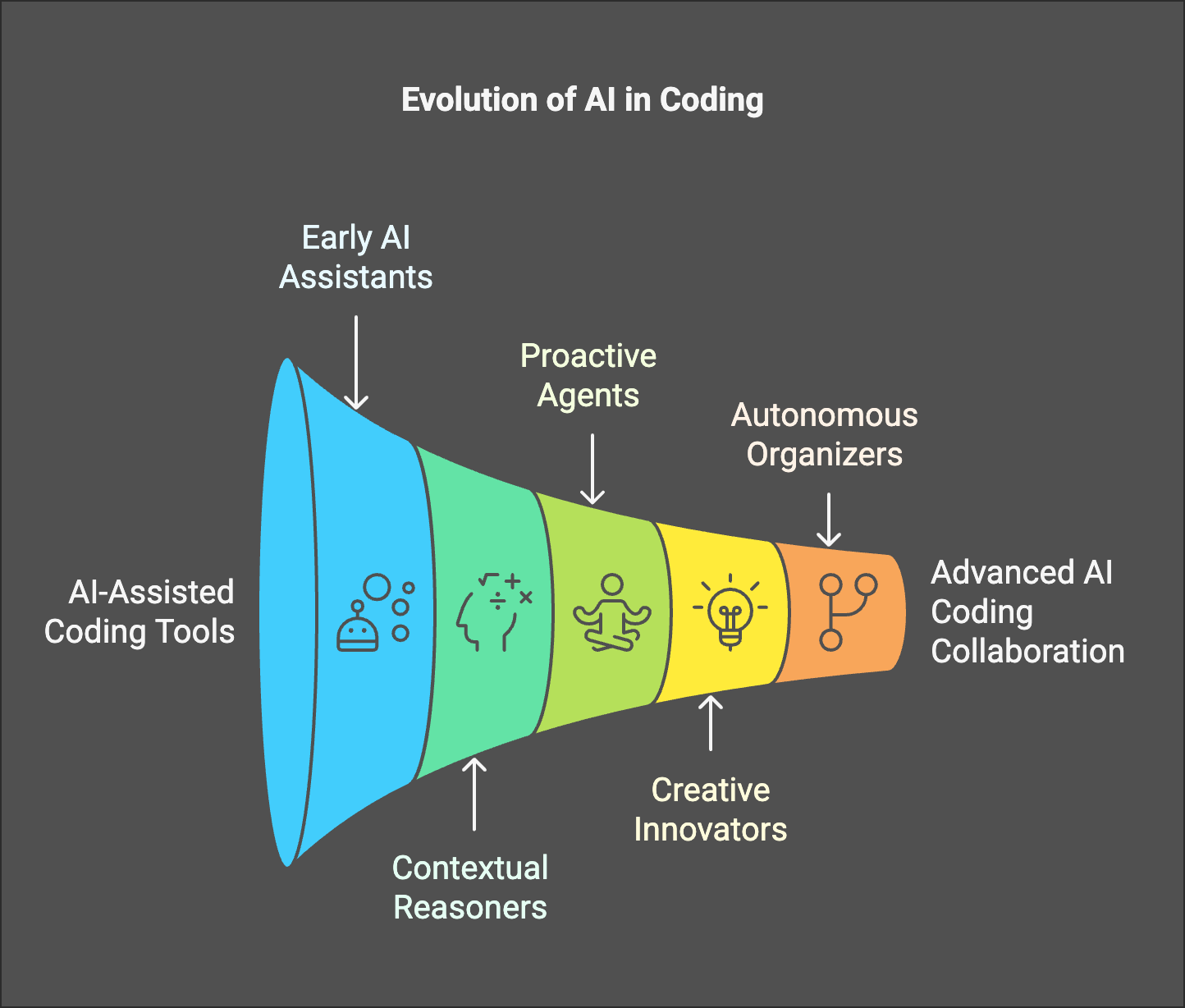Reflections on Henrik Kniberg’s Vision and Our Current Reality

Introduction
Artificial Intelligence is on everyone’s mind these days, and for good reason. The technology has evolved at lightning speed—faster than any of us could have predicted just a few years ago. Recently, Henrik Kniberg shared a fascinating article outlining a future where software developers might become obsolete or, at the very least, dramatically reorganized as AI takes over many coding tasks. His central premise is that software developers are effectively a “manual translation layer” between human desires and the code itself. Once AI can handle that translation fully, who needs humans?
As an indie hacker fascinated by building small-scale products and side projects, I found his ideas both exciting and—yes—a bit nerve-racking. Below is my take on Kniberg’s phases of AI-driven software development, how they apply to us indie hackers, and why I believe the reality is more nuanced than a simple “developers are gone” scenario.
Recap of Kniberg’s Key Ideas
Henrik Kniberg lays out several “phases” of how AI might integrate into the software development process:
- Phase 1 – AI-assisted development teams:
AI acts as an assistant that helps humans write code faster and more accurately. - Phase 2 – AI as a development team member:
AI becomes capable of making commits, opening pull requests, and even suggesting product designs in real time—just like a “colleague” on Slack or in daily standups. - Phase 3 – Smaller dev teams:
A single human paired with an AI might be enough to manage entire products. Coordination overhead shrinks dramatically as the AI takes care of most coding tasks. - Phase 4 – No dev teams:
Humans become optional. Requestors (stakeholders) interact directly with AI for product iteration, with the AI delivering features in seconds or minutes. - Phase 5 – No source code:
AI no longer even writes human-readable code; it compiles directly into machine or some AI-native instructions. Humans trust the AI and only ask for “explanations” in code if they want to look under the hood.
Kniberg’s speculation is bold: the trajectory might lead us to a future where code is just another layer of infrastructure we don’t see or touch—somewhat like electricity or Wi-Fi. But how does this theory hold up for today’s indie hackers, in 2023, when ChatGPT, Cursor, or Claude 3.5 haven’t yet reached total self-sufficiency?
Phases Through the Indie Hacker Lens
1. Phase 2 Feels Out of Reach… for Now
Henrik envisions an AI that can join our daily standups, commit to repos, and generate advanced product designs autonomously. While some specialized teams and advanced AI setups are inching toward that, it’s a tall order for most of us.
- Context Complexity: Even with powerful AI “assistant” tools, providing the full context—the current state of your codebase, user requirements, design patterns, technical constraints—remains cumbersome. Yes, you can copy and paste code into ChatGPT or feed it prompts, but friction remains. Indie hackers juggling many roles will tell you that seamlessly piping context into an AI is still tricky.
- Quality of Output: AI outputs can be brilliant one moment and baffling the next. A big part of a developer’s job is sorting out those edge cases. That’s where humans remain essential, especially on small teams that can’t afford major production misfires.
For the moment, AI is great at providing code snippets, debugging suggestions, architectural advice, or even rewriting modules. But letting it directly commit code to production without a human in the loop is a leap that many of us find risky. So, while the AI might be the star assistant, it’s not exactly the star developer—yet.
2. Phase 3—Smaller Dev Teams—is Already Here
If you’re an indie hacker, you probably feel this. The technology we have right now—powerful code-completion tools, Claude Sonnet or O1’s reasoning capabilities, and frameworks that automate many technical chores—lets one person accomplish what used to require a full team.
- 10x or 100x Leverage? With modern AI help, you can spin up an MVP in days. Tools like GitHub Copilot or AI-based code generators reduce boilerplate coding, letting you focus on the product’s core logic and user experience. Whether it’s next-gen prompt engineering for image generation or building entire microservices, you get huge leverage from these tools.
- Indie Momentum: The hallmark of indie hacking—rapid iteration and minimal overhead—actually meshes beautifully with AI. You can code, design, test, and deploy using a combination of robust AI and lean processes. This means that the “solo founder” or “tiny team” model can compete more effectively than ever, simply because the grunt work is taken care of.
So, for me (and many of you reading this), Phase 3 is less a future scenario and more an ongoing reality. That’s incredibly exciting. It’s also proof that even if entire dev teams don’t vanish, they’ll get leaner, faster, and more cost-effective.
3. Why Phase 4—“No Dev Team”—Might Not Fully Arrive
Despite Kniberg’s bold speculation, I remain convinced that going full-on “no dev team” won’t be a universal reality. At least not in the near future.

- Human-Driven Goals: Ultimately, software is built to solve human problems. Defining those problems, aligning them with real-world constraints, and empathizing with end-users often requires human judgment and creativity. An AI might be able to generate 20 variations in half a second, but it’s a person who decides which one feels right.
- Critical Decision-Making: We all have intangible factors that influence our decisions—brand voice, user empathy, personal passion. These are hard to reduce to purely logical prompts. Sometimes the best decisions emerge from the intangible synergy of human experiences, domain expertise, and gut feelings. That’s not easily replaced by any large language model.
- Social and Regulatory Factors: Beyond the technology itself, there are social structures—company policies, legal requirements, labor laws—that may slow down or modify the transition. Even if AI is “capable,” people might demand a human touch for validation, accountability, or simply comfort.
In short, while the “no dev team” scenario could happen for certain specialized or highly automatable use cases, I suspect it remains an edge scenario rather than a universal standard. For mainstream products and indie businesses aiming for uniqueness, real people still bring intangible value.
The Human Element: Creativity, Passion, and Purpose
One of the most important points Kniberg raises is: “Yes, AI can do it faster, but do we really want it to do everything?” Software is not just about implementing features; it’s also a creative act. Some of us code because we love the craft. Others do it to express themselves. That creative spark—the sense of building something meaningful from scratch—is a vital human driver.
- Differentiation Through Creativity: When everyone has the same advanced AI coding partner, the competitive edge for an indie hacker or small team might lie in deeply understanding an audience’s emotional or cultural context and translating that into a product. AI can guess and refine, but personal experience and passion often lead to those special touches users adore.
- Social Structures & Human Connections: We’re social creatures who crave collaboration and shared purpose. A purely automated pipeline misses out on the camaraderie, feedback, and synergy that come from working with other people. It’s not just about the code; it’s about the entire ecosystem of ideation, user interviews, design jams, and product storytelling.
So, What Should Developers (or Aspiring Indie Hackers) Do Now?
- Embrace AI, Don’t Fear It: The best way to conquer the unknown is to experiment with it. Try AI tools for small chunks of your workflow—debugging, rewriting code in different languages, generating UI mockups—and see what happens. Familiarity reduces fear and increases opportunity.
- Focus on Human-Centric Skills: The coding itself might become a commodity. The deeper questions—Why build this? Who are we building for?—remain the key to a product’s success. Communication, design sensibilities, user research, and domain knowledge will keep you indispensable.
- Collaborate with AI Wisely: Think of AI as a collaborator, albeit one that needs guidance. The more context you give it, the better it performs. Learn how to craft prompts effectively and how to interpret or refine AI outputs. You’ll get the most out of an AI “teammate” by understanding its strengths and weaknesses.
- Stay Curious and Adaptable: The pace of AI advancement is jaw-dropping. Pay attention, keep learning, and be ready to pivot your skill set. The difference between thriving and becoming obsolete may come down to how quickly and creatively you adapt.
Conclusion
Henrik Kniberg’s vision of AI eventually replacing entire dev teams—perhaps even phasing out the concept of human-readable source code—raises thrilling possibilities. In 2023, though, my belief is that we’re in a sweet spot:
- AI can turbocharge small teams, letting indie hackers thrive.
- We still need human insight, creativity, and passion to guide product direction.
- The future might yet surprise us, but the journey is ours to shape.
If you’re an indie hacker or a developer wondering about your place in this rapidly evolving landscape, take heart: the best approach is hands-on exploration. Try AI on your side projects. Iterate faster than ever. Cultivate the human qualities—empathy, insight, values—that machines don’t naturally replicate.
Because yes, AI is racing forward, but it’s the person holding the steering wheel (or deciding the route altogether) who ultimately chooses where we go.
Thanks for reading! I’d love to hear your thoughts—do you see the day coming when AI runs entire dev cycles without us, or do you think we’ll forever remain an essential part of the equation?



